AngularJS – Why & How to Create Custom Module
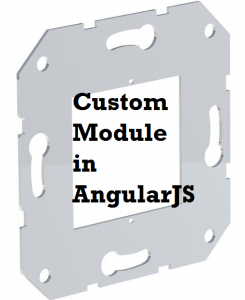
This article represents key concepts and code samples on why and how to create a custom module with AngularJS. Please feel free to comment/suggest if I missed to mention one or more important points. Also, sorry for the typos. Following are the key points described later in this article: Why create a custom module? How to create a custom module? Why Create A Custom Module? A module in AngularJS wires together some of the following components: Controllers Directives Filters Service In simple words, a module could also be thought of as container of above components. As per the design, if there is a need to bundle together …
How to Start a Big Data Practice

This article represents key aspects of starting up Big Data practice in your organization. Currently, I have started working in the same area and this blog is the result of my research. Hope you find it useful. Please feel free to comment/suggest if I missed to mention one or more important points. Also, sorry for the typos. Big Data Center of Excellence (COE) It may be a good idea to plan around setting up a Big Data Center of Excellence (COE)whose main objective would be take a holistic approach towards following two key aspects of Big Data from different perspectives such as setting up team, evaluating tools & frameworks, …
Why JSFiddle is a Great Tool for Web Technologies Blogger

This article describes reasons on why jsfiddle could prove to be a great tool for Web Technologies Blogger. I have been doing active blogging on Web technologies including HTML/JS/CSS. After coming across JSFiddle and playing with it for a while, I believe JSFiddle could serve as a great productivity tool for blogging on web technologies. I have listed some of the reasons below. Please feel free to comment/suggest if I missed to mention one or more important points. Also, sorry for the typos. Following are the key reasons explained later in this article: Allow users to play with your code Get rid of Boilerplate HTML/JS/CSS Code Easy to embed in …
AngularJS – How to Create a Custom Filter – Code Example
This article represents high level concepts and code sample/example for how to create a custom filter. The demo for the code example given below could be found on this following page: How to Create A Custom Filter. Please feel free to comment/suggest if I missed to mention one or more important points. Also, sorry for the typos. Following are the key points described later in this article: Key aspects of creating a custom filter Code Samples – Custom Filter Key Aspects of Creating Custom Filter Following are some of the key aspects that one needs to pay attention to, while creating a custom filter: To create a new filter, …
How Sublime Editor Can be Used For Blogging – Part 1
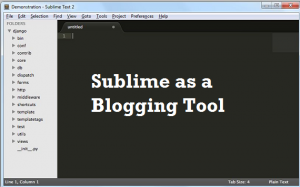
This article represents tips on how one could use Sublime Text Editor for writing their blogs in quicker manner. More so, if you are a developer and love blogging, you would find Sublime handy as you could write blog like coding by creating custom snippets as described later in the article. 🙂 The reason I have put this article as “Part 1” is because I believe I shall come across more such tips & techniques as I go ahead with my experience with Sublime and, I shall share them as another blogs. Please feel free to comment/suggest if I missed to mention one or more important points. Also, sorry for …
AngularJS Directives Hello World – Code Example
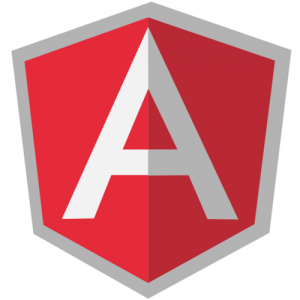
This article represents high level concepts and code examples on how to create a custom directive. For detailed documentation, one could access AngularJS page on custom directive. You could check out live demo of the code example in this article on http://hello-angularjs.appspot.com/angularjs-directives-hello-world Please feel free to comment/suggest if I missed to mention one or more important points. Also, sorry for the typos. Following are the key points described later in this article: Key aspects of Directive Code Examples – Directives Hello World Key Aspects of Directive The directive discussed in the blog is following: <hello name=”Calvin Hobbes”></hello> Following are some of the key aspects: Define directive. In this …
Ionic Framework – Different Ways to Create List
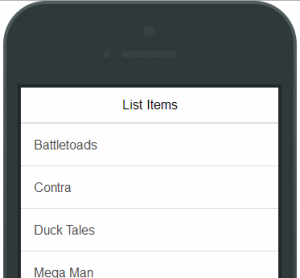
This article represents code samples and tips to create list items in hybrid apps created using Ionic framework. Please feel free to comment/suggest if I missed to mention one or more important points. Also, sorry for the typos. Following are the key techniques described later in this article: List items created using AngularJS custom directive, Ion-List (Recommended way) List items created using ul element List items created using div The code sample below demonstrate how URLs with its name and hyperlink is stored as array in AngularJS scope and later accessed in the view with ng-repeat directive. .controller(‘HelloCtrl’, [‘$scope’, function($scope){ $scope.urls = [{‘name’:’Gmail’,’url’:’http://www.gmail.com’}, {‘name’:’Yahoo Mail’, ‘url’:’http://mail.yahoo.com’}, {‘name’:’Hotmail’, ‘url’:’http://www.hotmail.com’}]; }]) …
Sublime – AngularJS – Useful Auto-complete Snippets
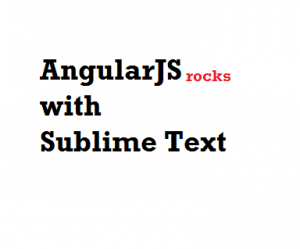
This article presents code samples and instructions to configure your Sublime editor to include ng (angular) scripts in auto-complete fashion. I found it important to get quickly started with my new angular apps. Based on following, you could define custom autocomplete snippets for all angular scripts. Following are the steps to create snippet file for each angularjs script: In Sublime Text Editor, go to Tools > New Snippet. A new untitled file consisting of following code would open: <snippet> <content><![CDATA[ Hello, ${1:this} is a ${2:snippet}. ]]></content> <!– Optional: Set a tabTrigger to define how to trigger the snippet –> <!– <tabTrigger>hello</tabTrigger> –> <!– Optional: Set a scope to limit …
Sublime – Configure to Open HTML Page in a Web Browser
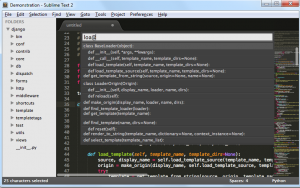
This article presents steps that is needed to configure Sublime to open the HTML pages you are working, in your preferred web browser. As I started developing AngularJS apps with Sublime, I got stuck at the point where I have to manually go to appropriate folder consisting of HTML file and double-click to open it in browser or, go to existing browser having that page and refresh it. In both the case, it was quite a bit cumbersome. Ideally, I wanted some shortcut keys right from within Sublime which would have helped me open the file in browser. This is where I did some research and found the way out. …
AngularJS – How to Code Quickly with Sublime Text Editor

After working on AngularJS for sometime now, I was looking for an editor which helps to code efficiently and effectively with AngularJS. This is when I discovered Sublime Text Editor. This article presents tips on what needs to be done to write AngularJS code with Sublime Text Editor. I have to confess that it has been a fulfilling experience to code in AngularJS with Sublime once installation and configuration is done. I was able to complete my AngularJS hello world program within few minutes. Trust me, it is worth your time. Let me know what you think about it. Do the following and enjoy the Angular ride much more than ever: …
Ionic Framework Hello World – Code Example
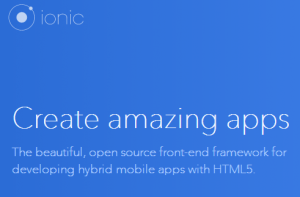
This article helps you get started with Ionic Framework, the open-source front-end framework for developing hybrid mobile apps with HTML5. Following will be discussed in the article: Why Ionic Framework? Pre-requisite for Good Fun with Ionic Ionic framework installation Ionic Starter Projects Hello World code example Feel free to add/suggest any points that I may have missed upon. Why Ionic Framework? When you have frameworks like Cordova/PhoneGap or Titanium, why need Ionic in the first place? Well, as I get started with some of these frameworks and got done with Hello World program and wanted to do more, I decided on getting myself expert at developing hybrid apps. The …
Android Development & How to Setup Mobile Device

The article presents quick tip on how to have your android app (developed using Android IDEs such as Eclipse or Titanium-based IDE) installed on your mobile device and have them tested right from your mobile device rather than from emulator. While trying to get this done with both Samsung and Motorola mobile handset, I failed on following front when I was working with Titanium IDE: Titanium IDE was unable to detect android device. All that I did was connect my mobile device and laptop with a cable and, expected magic to happen. After doing a little research, I figured out what needs to be done on both …
Reason Why Titanium Studio Failed to Start
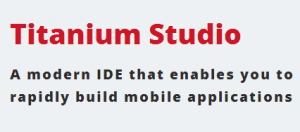
The article is a quick placeholder for those who downloaded titanium studio, installed the same but failed to get it started and got Java related error. After getting my hands dirty with Cordobva and Phonegap, I wanted to get setup with Titanium Studio. This is where I went ahead and downloaded the Titanium studio by getting myself signed up. After it got downloaded, I installed and tried to start it. However, it failed to start and throw following error: “Java was started but returned exit code=13” Well, after reading from some Stackoverflow pages, I went ahead and put the following code in TitaniumStudio.ini. But that failed to solve my problem. …
Cordova Hello World with AngularJS & Bootstrap
The article presents a quick code sample to get started with Cordova or PhoneGap and AngularJS and Bootstrap CSS framework.Interesting thing to note is that the development can be be same as if you are developing an AngularJS & Bootstrap Web app. This is inline with PhoneGap or Cordova being used to create a Hybrid mobile app. Following are simple steps to get started: Create a HelloWorld app with Cordova or Phonegap. Take a look at our previous article on how to get started with Cordova Hello World app. Once setup, what you have got is www/index.html where you could put your Bootstrap CSS path and AngularJS path. As like …
Cordova Hello World with Android & Eclipse IDE
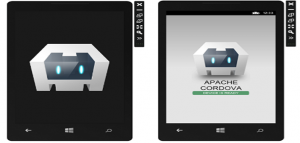
This article is aimed to get you started with Cordova, an open-source mobile development framework, with Eclipse IDE and write your first Android app, Hello World. Read about what is Cordova, how & who should use it on this page. Following will be detailed in this article: Why Cordova? Setup Cordova with Android Create Cordova Hello World App with command-line interface (CLI) Setup Cordova Hello World App into Eclipse Why Cordova? Following are some of the reasons why you would want to use Apache Cordova mobile app development framework. Well, following can be same for other Mobile development framework such as Titanium. If you are a web developer and want …
AngularJS – How to Pass Parameters to Controllers on Initialization

The article presents quick concepts and code samples on how one could pass the parameters to the controller during bootstrapping process. Feel free to comment/suggest. Usecase: Edit Page to Populate Data Retrieved from Server I came across a use case where I had to edit an existing object. Thus, I was required to populate the input fields with the existing value. When I tried to do in the usual manner which is like retrieving the object from the server and updating each of the input fields with the right value, it didn’t work out. The input fields were not getting the value retrieved from the server. This is primarily because …
I found it very helpful. However the differences are not too understandable for me